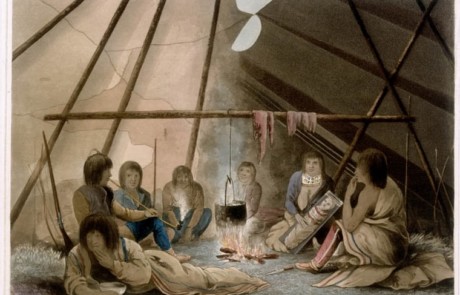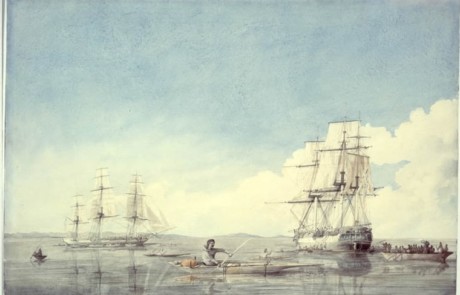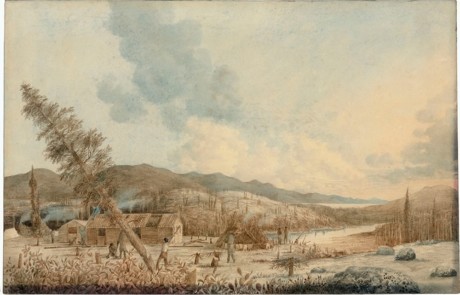Project Description
Expedition Crossing Lake Prosperous
near Great Slave Lake, NWT
1820, Robert Hood
water color on paper | *** painting style
National Archives of Canada, 49071
THE ART
A man of science and art, Robert Hood produced some of the first visual interpretations of Canada’s far north. Hood was a member of Sir John Franklin’s first expedition in 1819-1822, and in this watercolour (subsequently modified as an engraving by Edward Finden, also shown), Hood has illustrated the expedition’s crossing of Lake Prosperous, just north of present day Yellowknife.
Hood’s attention to detail is evident in this representation; the accuracy of the water crafts, individual attire and landscape is commendable.
We see boats disappear into the distance, creating a pictorial metaphor for the unknown future of the expedition. Hood presents a placid landscape, allowing easy passage, an expression that becomes ironic when considering the fate of these men. It is possible Hood was trying to imbue his already beleaguered journey with some sense of hope when he originally painted this scene.
The engraver Edward Finden’s delicate hand is visible here. The rendering of light and texture through fine lines gives this image, at first glance, the appearance of a black-andwhite photograph. When compared to the original composition by Hood, it is clear Finden was the more natural artist.
Hood accurately represented what he saw around him, while Finden took artistic liberties, like arranging the boats in a more compositionally compelling manner. He also pushed the boats and rocky cliffs further into the distance, giving the image a heightened sense of expansiveness while sacrificing the accurate sense of scale in Hood’s original, thereby diminishing the dominance the rock outcropping has over the scene.
This work illustrates how small artistic decisions can change the way we perceive the landscape.


 Robert Hood
Robert Hood

